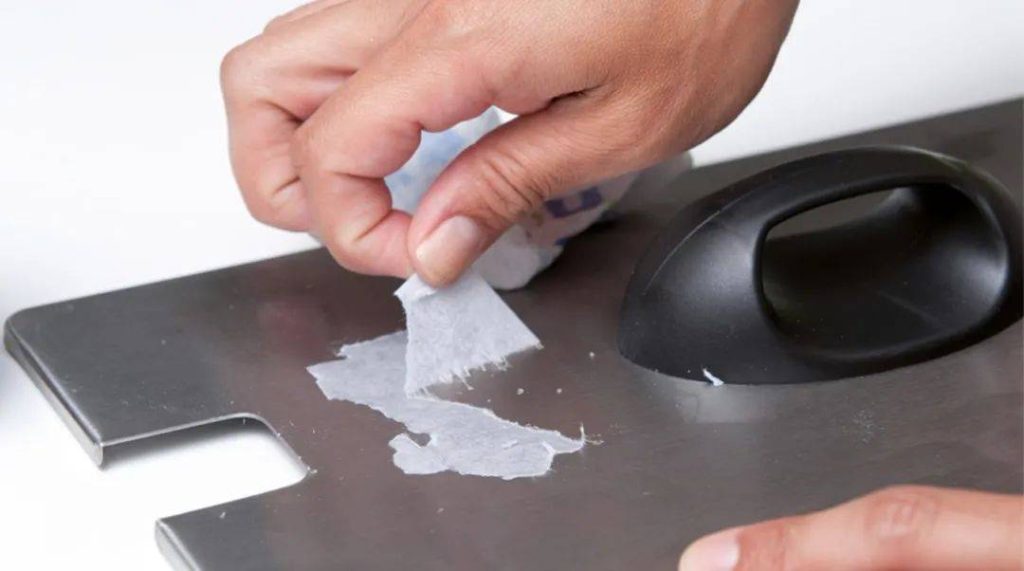Did you know that adhesive tape is one of the most widely used tools in the world today? From simple home repairs to complex industrial applications, this unassuming strip of material has become essential. In this article, we will delve into the technical aspects of adhesive tape, exploring its structure, the science behind its adhesion, and why it often outperforms traditional glue. Whether you’re in procurement or simply curious, join us on this journey to uncover the many facets of adhesive tape.
What is Adhesive Tape?
Adhesive tape—often simply referred to as tape or sticky tape—comes in a variety of forms, each designed with specific uses in mind. At its core, adhesive tape consists of a backing material coated with a layer of adhesive. The backing can be made from multiple materials, such as paper, plastic, or fabric, influencing the tape’s strength, flexibility, and durability.
Adhesive tape is categorized into two main types: single-sided and double-sided. Single-sided tape features adhesive on one side, ideal for securing items temporarily or superficially. A classic example is masking tape, commonly used in painting projects. On the other hand, double-sided tape has adhesive on both sides, which makes it perfect for applications requiring invisible adhesion, like mounting pictures or installing trim without visible fasteners.
Characteristics of Adhesive Tape
The characteristics of adhesive tape vary significantly based on its material composition and intended use. Typical features include:
Bond strength: This indicates how well the tape adheres to various surfaces.
Thickness: Thicker tapes often offer more robust support for heavier objects.
Tensile strength: This measures the tape’s resistance to breaking under tension.
Flexibility: Important for applications requiring the tape to conform to irregular surfaces.
To put things in perspective, according to the Global Newswire, the demand for adhesive tapes in North America alone reached approximately $4 billion in 2022, reflecting their ubiquitous nature in multiple industries.

To learn about double sided tape, please read: Introducing double sided tape.
What Makes Tape Stick?
The secret behind adhesive tape’s sticking power lies in the type of adhesive used. Various adhesives create different benefits and drawbacks depending on the intended application. Here are some common types of adhesives:
Pressure-sensitive adhesives (PSA): These adhesives bond upon mere contact and can be repositioned easily, making them ideal for temporary applications. For example, removable double-sided tape often uses PSAs.
Acrylic adhesives: Known for their high resistance to UV light and extreme temperatures, these adhesives create highly durable bonds, ideal for outdoor use.
Rubber-based adhesives: Offering strong initial tack, these adhesives bond quickly but may degrade under prolonged UV exposure.
Silicone adhesives: Excellent for high-temperature applications, these adhesives remain flexible in a wide temperature range and adhere strongly to many substrates.
To learn more about the adhesive used in tape, please read: Introduction to adhesives.
What is the Advantage of Tape Over Glue?
Adhesive tape offers several advantages that make it preferable to traditional glue in many situations. Firstly, tape provides immediate adhesion upon contact, eliminating the wait typically associated with glue drying. This allows for faster projects and efficiency in many applications.
Secondly, adhesive tape allows for repositioning and adjustment without losing its bonding strength, a feature less commonly found in traditional adhesives. Thirdly, tape is typically cleaner; it requires no mixing and does not create the mess often associated with glue spills. Lastly, if removal is necessary, adhesive tape can often be peeled away without damaging surfaces, which isn’t always the case with glue.
What Are the Advantages of Pressure Sensitive Tape?
Pressure-sensitive tape, or PSA tape, is particularly advantageous for a variety of reasons. Its primary benefit is versatility; it sticks well to numerous surfaces ranging from smooth to textured.
PSA tape provides user-friendly application across various substrates, making it a go-to for industries like automotive, construction, and electronics. Its immediate adhesion means it can eliminate the need for additional tools or equipment in many cases, streamlining processes. Furthermore, pressure-sensitive tape is known for its durability against environmental factors such as moisture and UV light, making it suitable for both indoor and outdoor applications.
What Conditions Fail a Tape?
While adhesive tape is incredibly versatile, certain conditions can adversely affect its performance, leading to failure. Here’s an overview:
Chemicals
Many adhesives are susceptible to degradation when exposed to harsh chemicals. For example, solvents can dissolve adhesives, weakening the bond. It is vital to verify the compatibility of adhesive tape with any cleaning agents or industrial chemicals it may encounter in its applications.
Temperature
Temperature plays a significant role in tape performance. High temperatures can soften or break down adhesives, causing a loss of bond strength, while extremely low temperatures can make the tape brittle. For instance, duct tape can fail in extreme heat, melting the adhesive, or in the cold, where it becomes too rigid.
Tensile
Tensile strength refers to the maximum amount of tensile stress the tape can withstand before failing. If the tape is stretched excessively, it can tear or peel away from surfaces, particularly under high load or stress conditions. Testing this characteristic is vital for ensuring your adhesive tape can handle its intended use.
Uniformity
Inconsistent application can compromise the bond. Uneven surfaces or bubbles can create weak points that may lead to premature failure. A proper application technique is essential for optimal performance.

How to Test the Tape at Fonitaniya?
At Fonitaniya™, we take quality seriously. Our testing protocols for adhesive tape ensure each product meets stringent industry standards. Here’s how we perform our tests:
Bonding Strength: Permanent vs. Temporary
We investigate both permanent and temporary bonding strengths, which are essential metrics for determining how well our tape adheres when subjected to various pulling forces. During testing, we apply controlled weights to represent different usage scenarios. For instance, our double-sided tape undergoes thorough evaluations under various conditions, including how well it holds pictures on walls versus suspended objects like banners. This two-pronged approach enables us to fine-tune our products for various applications, ensuring they provide the required adhesion without compromise.
Extreme Temperatures
We simulate extreme temperature scenarios to evaluate our tape’s performance in harsh conditions. Our products are subjected to both high and low temperatures, ranging from -40°C (-40°F) to upwards of 100°C (212°F), which helps us to understand how they maintain their integrity and adhesion. For example, tapes used in automotive applications must withstand the heat generated by engines and maintain strong adhesion to withstand vibrations, while tapes in refrigeration equipment need to remain effective in sub-zero environments. These rigorous tests allow us to develop tapes that can endure the stresses of different industries, ensuring long-lasting performance.
UV Exposure
Prolonged UV exposure can significantly weaken adhesive tape over time. UV rays can break down the polymer chains in adhesives, leading to reduced effectiveness, discoloration, and eventual failure of the bond. To address this, we conduct rigorous testing on our tapes to ensure they retain their strength and adhesion when exposed to sunlight for extended periods.
Specific substrates, such as plastics commonly used for outdoor signage or packaging, are particularly sensitive to UV light. For example, a clear acrylic tape may appear visually clear when first applied; however, without UV resistance, it could become yellowed, brittle, or lose adhesion after months under harsh sunlight.

Aging and Specialty Tape Testing
Aging tests reveal critical information about how our adhesive tapes perform over time, particularly under stress or fluctuating environmental conditions. We conduct accelerated aging tests in which our tapes are subjected to heat, humidity, and UV exposure simultaneously. This mimics years of exposure to natural elements in a fraction of the time, allowing us to understand any potential deterioration of adhesion strength or appearance.
Additionally, specialty tapes, such as those designed for electrical insulation, undergo specific tests to ensure they meet safety and regulatory standards. These tests include dielectric strength assessments to ensure they can withstand high voltages without conducting electricity, alongside environmental resistance tests to verify that they won’t degrade in moisture or extreme temperatures.
Conclusion
To sum up, adhesive tape is a remarkable product that combines simplicity with a wealth of technical detail. Its unique characteristics, types of adhesives, and testing processes contribute to its effectiveness across numerous applications. As an industry leader, Fonitaniy Tape has spent over 15 years innovating in this space, creating specialty tapes that serve diverse needs while adhering to rigorous standards. Our commitment to quality and performance makes us the go-to adhesive solution provider.
FAQs
What types of adhesive tape are there?
Common types include masking, duct, and double-sided tape, each designed for specific tasks.
How do I remove adhesive tape without damaging surfaces?
Carefully peel it back at a low angle, applying heat if needed.
Is adhesive tape waterproof?
Many adhesive tapes are waterproof or water-resistant for specific uses.
Can adhesive tape be reused?
Some types of adhesive tape can be reused, particularly those with pressure-sensitive adhesives.
What is the best way to store adhesive tape?
Store tape in a cool, dry place away from direct sunlight for optimal longevity.




